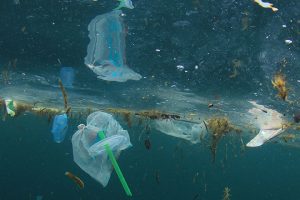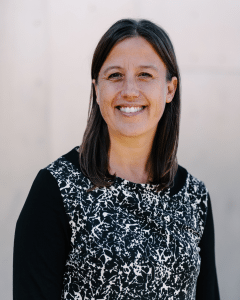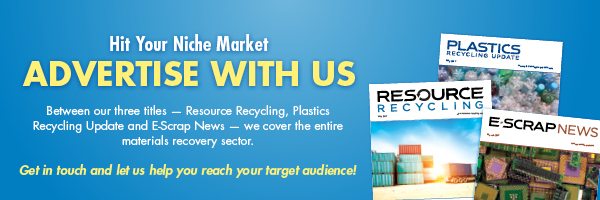 A new ocean plastics prevention effort connects brand owners with collected oceanbound material that can be used in manufacturing. A key stakeholder recently described the four-step approach the project will entail, and what that will look like on the ground.
A new ocean plastics prevention effort connects brand owners with collected oceanbound material that can be used in manufacturing. A key stakeholder recently described the four-step approach the project will entail, and what that will look like on the ground.
The Lonely Whale nonprofit organization runs several marine plastics-focused projects, each taking a different route toward tackling the issue. One project, for instance, educates students on single-use plastics pollution and provides them with tools to address the issue in their local communities.
Nextwave, the latest project from the organization, comes at the issue with a market-based strategies, connecting ocean-bound plastics with companies who want to use it as feedstock. It launched in December, backed by a group of member companies that have pledged to use the material in their operations.
Initial members include Dell, General Motors, Trek Bicycle and more, and the project is actively recruiting more member companies.
Plastics Recycling Update spoke with Dune Ives, executive director of the Lonely Whale, to learn about the stages of the initiative, how it differs from other projects tackling marine debris, and what the process from collection to end use looks like on the ground.
What are the various components of the NextWave project? What is the first step member companies will take, and what comes after that?
Step number one is identifying what their “use case” is going to be. By use case I mean, which product or packaging are they going to consider integrating this oceanbound plastic into?
We’re trying to make sure that there’s no mystery associated with where the material came from, how it was collected how it was processed, or how it was integrated.
Step two is figuring out type and volume. We help them figure out where that plastic material is going to come from, and make sure that the suppliers meet all of our environmental and social requirements, so the end users can be assured that they’re truly impacting the issue positively from an environmental standpoint – so we’re not just getting plastics out of a recycling center in some part of the developing world. It’s truly mismanaged waste that’s being turned into managed waste, that these companies are then procuring to be able to integrate into their products.
And then step three, which is probably one of the more difficult steps, is to actually start integrating it. This is a new material, and every application, every use case, the manufacturing and engineering teams are going to have a different experience with it. And so part of the value of coming together as a consortium, is that they get to learn from and grow with each other, test it out, figure out what works and doesn’t work, troubleshoot together. And then from an engineering and manufacturing standpoint, be able to move forward with integrating this new material at scale across multiple products.
The last step is to document their work in a case study, and publish that case study broadly so that there’s a lot of transparency in the process, and the material, essentially, is open source. So ideally, anybody could do it. That’s part of the beauty of Nextwave: We’re trying to make sure that there’s no mystery associated with where the material came from, how it was collected how it was processed, or how it was integrated.
In the case of Dell, when they published their first case study, it resulted in excitement and enthusiasm from other companies to all try to figure out how to get involved and how to join the effort. That’s when we had significant interest, enough interest from companies to be able to recruit them for Nextwave.
What does this look like on the ground? How does the plastic get from being oceanbound to being recycled?
There’s probably too much mystery associated with that, to be honest. And it’s one of the things that Dell and others are really working hard to demystify and shed some light on. Because it’s really important that we have confidence as consumers in the process, and that these companies have confidence that they know what product is coming from where.
There’s four different types of plastic that are collected today [through the project]: there’s PET, HDPE, nylon and polypropylene.
Nylon and polypropylene are primarily collected through the collection and then processing of fishing nets that are no longer utilized by fishers. Presently, about 10 percent of all plastic in the ocean is from fishing lines and fishing net material, and that takes the longest to break down in the ocean, hundreds of years. We want to intercept them before they’re thrown over the boats.
Collection facilities are being set up on the ground in key communities in Chile and others. There is a company called Bureo, another called Net-Works and a couple of others that are actively working to collect and then transport those nets. In some cases, there’s another party that the material will go to for first-level processing and baling. In some cases, like the case of what Dell is doing in Indonesia, with suppliers in three different locations, that material is processed and baled on-site, and then shipped to the manufacturing facilities, where it’s gathered and further processed into the forms needed, for the products or the packaging that it’s going to be turned into.
Presently, about 10 percent of all plastic in the ocean is from fishing lines and fishing net material, and that takes the longest to break down in the ocean, hundreds of years. We want to intercept them before they’re thrown over the boats.
How do you determine which region you’ll target?
We’re really basing location on the best available science.
There’s a number of academic institutions that are working together to continue to add to our understanding of what’s known as “leakage,” waste on the ground near a waterway that leaks into a marine environment.
What we know today is there are five areas located in Southeast Asia that most contribute toward the marine plastic pollution issue. We’ve decided to focus on Indonesia as being one of the first sites that we go to. India is also on the list. Two of the reasons those two are on the list, aside from contributing significantly to the marine litter issue, is favorable government relations and having some assurance on the ground, some NGOs and others on the ground, that can help verify how the material is being collected, how it’s being processed and how it’s being shipped.

Dune Ives, executive director of the Lonely Whale
The member companies in this project come from a diverse range of industries. Is there a single thread drawing them all to the project?
What we’re seeing with each of these companies is there’s a champion inside the company, either at the C-level or at the engineering level, that has seen firsthand the plastic pollution issue. A lot of folks who are divers, a lot of folks who spend a lot of time outdoors. And they’re just really compelled by this issue.
Plastic pollution is the one thing that unites us all around the world; you can’t actually get away from it. It’s not like climate change – it’s really difficult to see a molecule of CO2, and it’s even more difficult to understand how those molecules of CO2 are impacting things like bats in Australia. Some of these issues just seem so far away, and it’s hard to figure out how you really get engaged.
But plastic is so visual, plastic pollution is so visual, and it creates such a visceral reaction when you see the harm that it’s doing in marine life. I think it becomes a motivating force.
There’s been so much work about ocean plastics done in the past few years, and a lot of it has been awareness-building to highlight this issue. Do you feel that it’s gotten to the point where the conversation can move into the next phase, what you’re talking about with these market solutions?
Yes and no. I think we’re seeing some early winds. We’re seeing enough people be motivated by the extent of marine litter that they want to get engaged and they want to take action.
The more we can speak with each other and strategize together, the more quickly and more effectively we can solve this problem. Ocean plastic is not an issue that will go away if we silo ourselves.
I also think, though, that we’re still in a state where trash on the beach, or next to a river, or even trash on the street, has become the new norm. You almost expect it. And when you experience it every single day, and it becomes seemingly normal, I think you’re less likely to act. So unfortunately, even though we have some of these early leaders taking charge and doing their part, I think we need more data. I think we need more visuals, more storytelling. We throw things away, but I think we need to know where “away” is. We need to better understand visually what the impact is, not just on animals, but on human health. And then maybe we’ll see more people really get involved, and we’ll see a tipping point on this issue.
There are multiple organizations working on the ocean plastics issue, including Closed Loop Partners, the Ellen Macarthur Foundation and more. How do you see these projects complementing one another?
We’re all talking to each other, first and foremost. We know that there’s not only one solution needed. We need a myriad of solutions to address this issue. Nextwave is specifically addressing one of the recommendations from the New Plastics Economy report. Closed Loop Fund, as they prioritize where they’re going to be doing infrastructure development, it allows us to demonstrate we have companies that have a demand for that end material, so that it can be integrated into products that will not find their way back into waterways.
The more we can speak with each other and strategize together, the more quickly and more effectively we can solve this problem. Ocean plastic is not an issue that will go away if we silo ourselves. It is an issue we can effectively address by working closely with each other and collaborating, by being really transparent and open source, and having effective communication between groups. I think that’s really critical.
Ives will speak during the closing session at the Plastics Recycling Conference this week in Nashville. See the full conference session schedule for more details.
Top photo credit: Rich Carey/Shutterstock
More stories about industry groups
- APR alliance aligns global packaging design guidance
- APR applies pressure on PET imports, tariffs
- Colorado approval signals path forward for PRO choice


